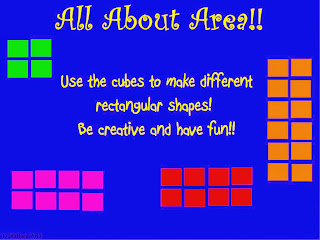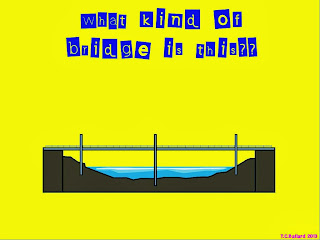Traditional science lessons
focused on “teaching the processes, not just the outcomes, of science,” and it “often
involved no more than memorizing and reproducing the steps of an experiment”(Donovan
& Bransford, 2005, pg. 403). This is exactly what I remember from most of
my science class experiments, especially those taught in high school. We would
usually be given a background scenario and the opportunity to build a
hypothesis…which is a form of inquiry, in a way, but since the end result was
usually known and always concrete, there was no need and typically no room for
creativity. I would, sometimes unbeknownst to my teachers, take creativity into
my own hands, as mentioned in the last answer, and “tweak” a variable in some
way to see if the outcome would change. Like I said, sometimes unbeknownst,
when I would get caught being “defiant” by deviating from the “experiment” it
was generally because something would start smoking or an outcome would change
drastically. I’d get in trouble, but I’d say it was for science’s sake. I used
to wonder why we would even bother with making “hypotheses” since we already
knew what was going to happen. When the end goal in a science lab is presented or
known it can thwart a student’s creativity and imagination towards and/or
within that scientific thinking. Donovan & Bransford refer to that “thwarting”
as a “lockstep approach”, an approach that shortchanges observation,
imagination and reasoning (Donovan & Bransford, 2005, pg. 405).
Einstein, one of imagination’s
biggest supporters, saw the connection between his scientific knowledge and how
he acquired it. “One of the most important aspects of science-yet perhaps one
of the least emphasized in instruction-is that science involves processes of
imagination” (Donovan & Bransford, 2005, pg. 406). Interestingly, although we
know this is the way the world’s most ingenious scientists “learned” to do what
we remember them for, we’ve failed as educators to encourage our students to
think in the same ways, through our modeling and instruction. Donovan &
Bransford suggest we teach our students science differently, as imagination
plays a huge part in how our students learn science (Donovan & Bransford, 2005,
pg. 406). It’s beneficial to give them opportunities to experience real inquiry
labs, not just “inquiry times” appended to the curriculum (Donovan &
Bransford, 2005, pg. 405). Allowing them to look beyond what they “know”, or to
look beyond their current understanding, as Einstein advocated, through
imagination, is key.
This
quarter in Science in 3rd grade we are learning about forces and
motion. MCPS’s “Enduring Understandings” for this quarter include: “A force is
required for any change in motion, changes in position and motion can be
observed and measured, and tools, materials, and skills are used to carry out a
task, conduct an investigation, or address a problem.” MCPS’s “Essential
Questions” for this quarter include: “How evidence is collected about changes
in motion, what evidence can be collected to describe changes in position and
motion, and what factors affect changes in motion?” NGSS says that students who
demonstrate knowledge of standard 3-PS2
Motion and Stability: Forces and Interactions will be able to: “Plan and
conduct an investigation to provide evidence of the effects of balanced and
unbalanced forces on the motion of an object.” and “Make observations and/or
measurements of an object’s motion to provide evidence that a pattern can be
used to predict future motion.” (NGSS, 2011, 2012, 2013). In short students are introduced to the basic
concepts of Physics properties, including motion, gravitational pull, surface
friction and Sir Isaac Newton’s first and third laws of motion.
During
the first couple weeks of school we discussed, tested and observed examples of
force and motion and the effects of gravity. I begin all of my lessons, STEM
related or not, with some kind of inquiry. In the case of the aforementioned concepts,
I one day showed my students a picture of a sliding board and a basketball and
asked them to write a prediction and draw a diagram of the trajectory of the
ball if dropped from the top of the slide.
I then gave each table several
slender rectangular prisms, foam cubes and small plastic balls and masking tape
and clay and challenged them with building a model structure similar to a
sliding board to test their theories about the trajectories of the basketball.
After many trials and observations, we went outside and tested our theories on
a real basketball and a real sliding board. Through much discussion the
students decided that gravity was the cause of the ball falling down the slide
and were able to conclude the basis for Newton’s first law, also known as the
Law of Inertia. Once their theories were proven or disproven I asked them to
brainstorm ways in which they could push or pull the basketball back up the
slide without using their hands. They devised ways to move the ball, used the
same materials as mentioned before plus string and rulers and built prototypes
and tested their models using the basketball and the sliding board.
Slide shown with student trajectories drawn by students in my class.
During
the next couple weeks we discussed, tested examples of and observed the effects
of surface friction on motion. I incorporated forces on bridge designs and
surface friction into these lessons because we’d just read a book called Javier
Build’s a Bridge, an engineering book about a boy who needed to build a
bridge. After reading the book, and discussing and testing bridge types, we
decided as a class we’d build beam bridges. I gave each table group slender
rectangular prisms, foam cubes and tape, clay and rubber bands and challenged
them with building a sturdy bridge that could support the weight and mass of a
toy car, along with other specifications including not being able to physically
touch the car to make it go from one side to the other, using the materials
provided. I then asked them to brainstorm ways in which we could “see” how long it takes for the toy car to get from
one side to the other after being pushed to get them to understand when to use
certain materials and why we use them. A few friends suggested we time the span
using a cell phone or a stop watch, so I gave them stop watches. After timing
four trials, I asked them to brainstorm ways in which they could slow the car
down using these materials: sand, glue, tape and/or felt. They used the
different materials and the Engineering Design Process to redesign bridges with
more surface friction. They used the stop watches to make sure their cars were
in fact traveling slower after being pushed. We then discussed surface friction
and its effect on moving objects.
I
believe this pedagogical approach allowed my students to use their imaginations
and creativity to devise bridge designs and build them, and then to redesign those
bridges to make them answer an engineering design question. I didn’t give them
any answers and very few prompts, if any. I had them draw all of their
conclusions on their own and with their classmates help. Students were given
the opportunity to use their artistic and creative juices to create visuals,
with labels, of these models. I think this method of teaching the
aforementioned concepts allowed for imaginative and creative freedom, within a
goal or as Donovan & Bransford put it, it allowed them to use their “observation,
imagination, and reasoning about the phenomena under study” (Donovan & Bransford, 2005, pg. 405). This
should, in turn “extend their everyday experiences of the world and help them
organize data in ways that provide new insights into phenomena” (Donovan &
Bransford, 2005, pg. 405).
Written in response to this question.
Donovan, Suzanne M. & Bransford, John D. (2005). How Students Learn. Committee on How People Learn, A Targeted Report for Teachers
Donovan, Suzanne M. & Bransford, John D. (2005). How Students Learn. Committee on How People Learn, A Targeted Report for Teachers



































